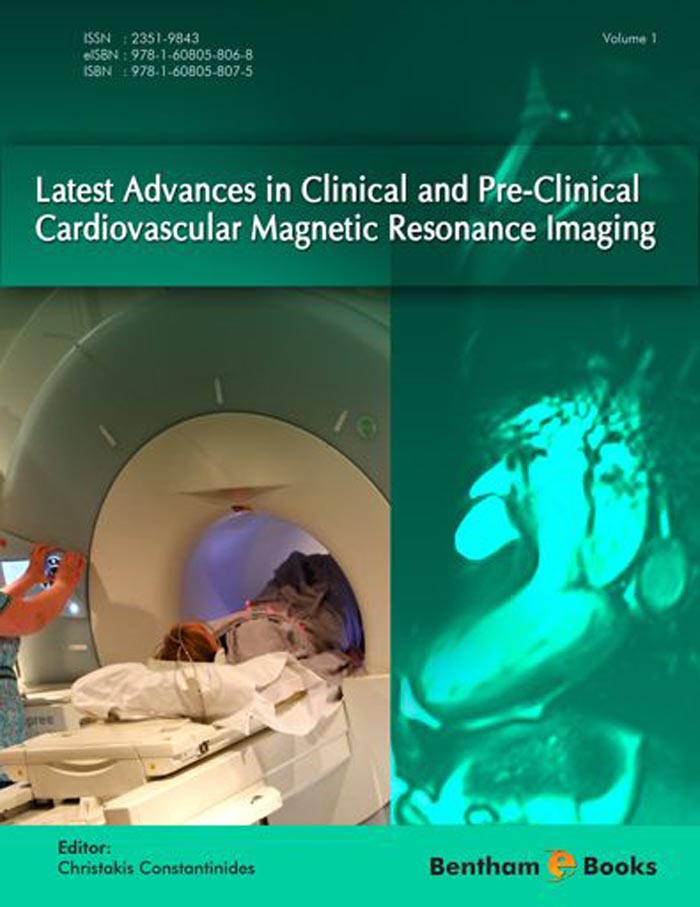The eBook “Latest Advances in Cardiovascular MRI” is an enthusiastic account of the state-of-the-art in preclinical and clinical cardiovascular MRI. The editor Christakis Constantinidis and all the individual contributors are to be congratulated for providing an excellent overview of the capabilities of this remarkable technology. Ever since the realization in the seventies that MR had extraordinary medical potential, basic scientists and clinicians alike have begun to explore its utility for in vivo studies of the heart and the vascular system. The cardiovascular system poses many challenges to MR imaging and spectroscopy because of the contractile motion and the flow of the blood as well as the macroscopic displacements resulting from respiratory activity. With phenomenal advances in MR hardware, pulse sequence capabilities, image reconstruction techniques and improved triggering and gating approaches, the routine acquisition of high-quality MR images of heart and blood vessels in man has become reality for quite some time. The availability of such tools for use in preclinical studies on small animals has considerably lagged behind, especially for research in mice, due to the small size of the relevant structures and the very high rates of cardiac motion and arterial blood flow. Small animal counterparts of many cardiovascular MRI techniques that had been in use for human studies for quite a while only recently became available. This process of reverse translation from the clinical to the preclinical setting is in fact of vital importance to the field as it can be expected to speed up further developments of the technology. Biomedical studies in small animals and in particular mice are crucial for gaining insights in the pathophysiological processes underlying cardiovascular diseases. For these reasons, the advancement of the field of cardiovascular MR requires a sound balance between preclinical and clinical activities and needs an active exchange of ideas on measurement concepts as well as healthcare challenges between basic biomedical and clinical researchers.
The present eBook is an excellent illustration of the remarkably broad utility of cardiovascular MRI, describing recent clinical advances and developments at the technological and preclinical level. All of the contributors are experts in their respective domains of the field. The book addresses a topic that is of great societal importance, since cardiovascular diseases continue to be main causes of death and ii morbidity worldwide and have an enormous impact on the costs of healthcare systems. Therefore there is a pressing need for developing more effective diagnostic procedures that can be used to guide clinical management of patients and that can provide quantitative prognostic biomarkers for steering therapy and for follow-up. MRI provides a wealth of different types of information on the cardiovascular system, ranging from plain anatomy and basic function to tissue micro-architecture and cellular metabolism and therefore is ideally suited to reshape the practice of cardiovascular patient care. The field witnesses many exciting developments to speed up the rate of MR image acquisitions, whilst maintaining high data quality. This will drastically shorten scan times and thus alleviate one of the major hurdles for advancing MRI in the clinic. The field is thereby also making big steps towards becoming more patient-friendly and more cost effective.
The eBook is highly recommended both for cardiovascular MRI experts and novices.
Klaas Nicolay, Ph.D. & Gustav J. Strijkers, Ph.D.
(Professor of Biomedical NMR & Associate Professor of Biomedical NMR)
Department of Biomedical Engineering
Eindhoven University of Technology
Eindhoven
The Netherlands
and
Centre for Imaging Research & Education Eindhoven
The Netherlands
Cardiac magnetic resonance imaging has witnessed tremendous advances since its introduction in the early 1990’s. Although MRI has played a central role in medical imaging since the mid-1980’s, cardiac MRI has only truly blossomed over the past decade. Advances in magnet hardware technology, and key developments such as segmented k-space acquisitions, advanced motion encoding techniques, ultra-rapid perfusion imaging and delayed myocardial enhancement imaging have all contributed to a revolution in how patients with ischemic and non-ischemic heart disease are diagnosed and treated.
Fundamental to this revolution has been tremendous advances, both in hardware technology and our understanding of MR physics as applied to cardiac MRI. High-field strength magnets (1.5T, 3T, and even 7T), ultra-rapid gradients, and advances in phased array coil technology with parallel imaging reconstruction algorithms that have lead to important advances in cardiac imaging strategies. Indeed, cardiac MRI is a widely accepted method as the “gold standard” for detection and characterization of many forms of cardiac disease.
Despite pessimism on the continued role of MRI in clinical care in this environment of declining reimbursement, I am highly optimistic that the safety, accuracy and increasing availability of cardiac MRI will ensure a bright future. For these reasons, this textbook is particularly timely. Dr. Constantinides has assembled a team of international recognized experts presenting a highly innovative synergistic juxtaposition of advances in clinical cardiac MRI and technical and pre-clinical advances. The two sections of this textbook are highly complementary and will be of great interest to clinicians with interests in advanced clinical applications, and to physicists and engineers interested in advanced technological advancements in cardiovascular imaging, but with a clinical context to understand the role of this important technology.
Scott Reeder, MD. Ph.D.
Associate Professor
Chief of MR Radiology
Cardiovascular Imaging Section
University of Wisconsin Madison
USA

